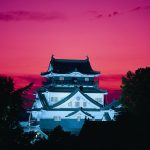
Authentic Indonesia
Denpasar (Badung) is usually the point of arrival for visitors to Bali. Since the completion of the four-lane Jalan Bypass, however, they are likely to see little of the city itself as they head right away for one of the tourist resorts.

The palace of the Rajas of Badung (Puri Pemecutan), now a pleasant small hotel, lies in the angle between Jalan Thamrin and Jalan Hassannudin. Behind a red brick wall are a number of charming buildings set in a luxuriant tropical garden.
Although the Bali National Museum, measured by the standards of other national museums, may fall short in the matter of systematic arrangement, it is well worth a visit.

Immediately to the right of the main exit from the National Museum is the Pura Jagat Natha (Temple of the Rulers of the Worlds), dedicated to Sangyang Widi.
The Pura Maospahit is one of the most important temples in Denpasar and one of the oldest. There is reliable evidence that it dates from the 15th century.
Werdi Budaya Art Centre (Jalan Bayusuta) is worth visiting both for the permanent exhibition of Balinese paintings in the main building and for the exhibition of work by both young and established artists for sale.
Near the Art Centre (Jalan Ratza) is the Academy of Indonesian Dance (Akademi Seni Tari Indonesia, ASTI), in which young Balinese are taught the high art of the traditional dances, the shadow play (wayang kulit) and the playing of the instruments of the gamelan orchestra.
In the angle between Jalan Gajah Mada and Jalan Sulawesi is the town’s largest market, the Pasar Badung, housed in a three-story building. Fresh vegetables and fruit are sold in the basement, handicrafts, textiles, clothing on the upper floors.

Some 550 m north-east of the National Museum can be found St Joseph’s Church (R.C.), in which Christian beliefs are represented in characteristic Balinese style.


